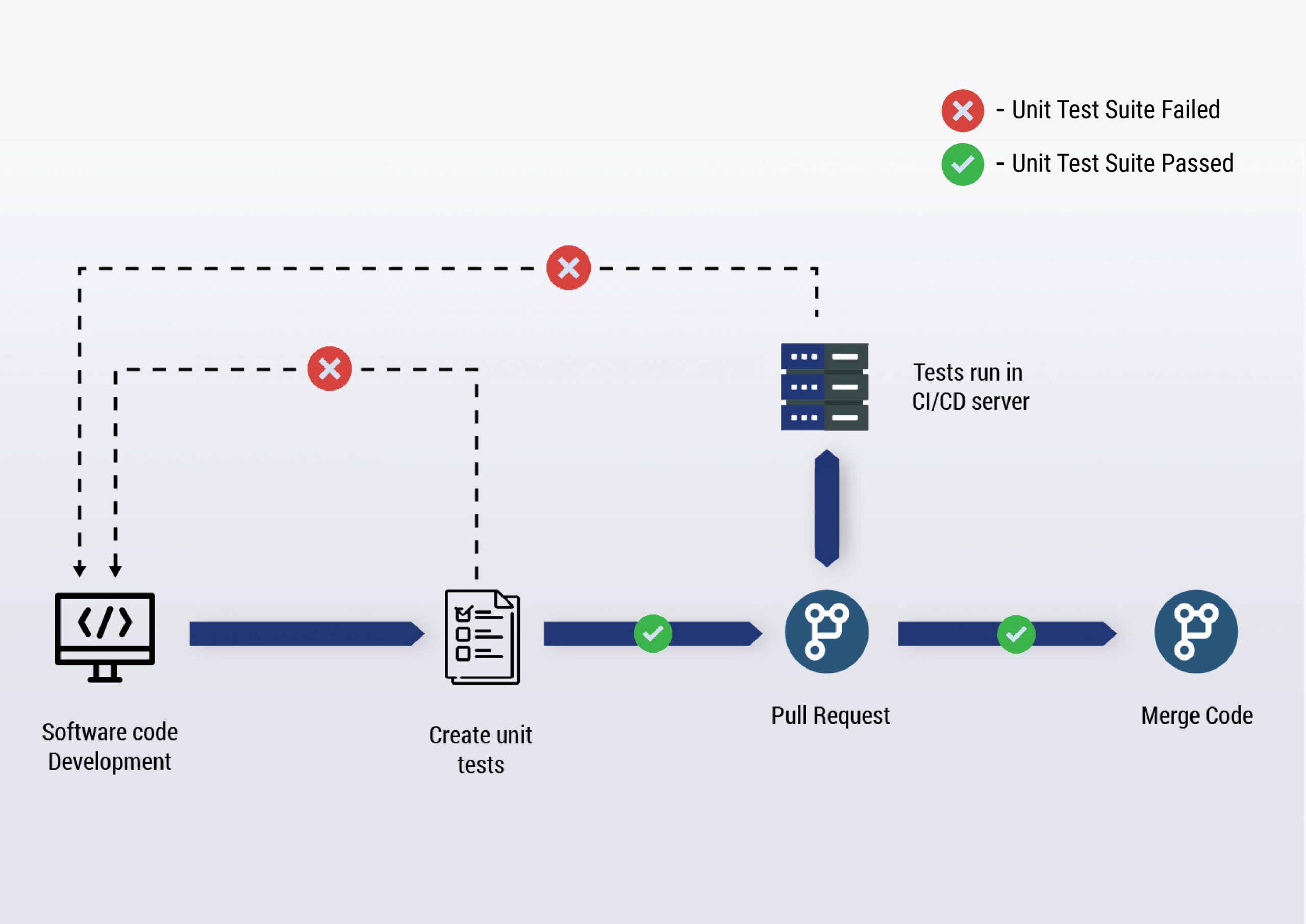
All-In-One Scriptless Test Automation Solution!
All-In-One Scriptless Test Automation Solution!
Software Testing has a series of well-organized processes to ensure timely delivery of high-quality software products. Unit Testing is an integral step in the software development process. Developers perform unit testing to test the unit codes and make sure there are no technical issues, and they function as customer’s specifications. Building an efficient unit test suite allows you to identify risks and problems in the earlier stage and avoid their existence in the product’s final delivery to customers. Software unit testing mainly involves checking individually developed components for errors.
Generally, developers skip writing automated unit suites due to lack of time, and delivery deadlines, leading to several issues such as flawed design, documentation, incomplete specifications, etc., thereby impacting the project’s overall timeline and quality. In the present world, considering the fact that all projects are executed in an agile fashion, the product managers must educate the development teams about unit testing, its goals, and its scope. Unit testing also validates all the component’s performance, boosts the development process, and helps write clean & understandable code. It is essential to execute this form of testing at regular intervals to ensure the smooth delivery of high-quality software products. Sun Technologies’ committed and experienced development team follows standardized principles to build an efficient unit test suite and help enterprises achieve process efficiencies and accelerated growth.

Application leaders must Foster “upstream thinking” by asking product team members to delve deeply into the root causes of operational concerns. Have your teams focus on a risk-based approach with the right sized team composition and technology for testing by dissolving your testing center of excellence (COE) and improving environment provisioning and delivery practices. Even if organizations are operating in a traditional waterfall model, encourage the developers to build automated unite tests as part of their DevOps and CI/CD practices. Before creating the tests, ensure that all the team members share their thoughts and have a similar objective. The more the crew is on the same page, the more optimized and successful the results will be. Test Early Test often starts with Unit Testing.
Building the right framework starts with asking the right questions. Was the code reviewed? Do developers utilize static analysis? Do unit tests receive code reviews and have high levels of coverage? Is the release deployed via a “canary” or feature flag mechanism? Is the application architected with isolation of services? Testing for risk should also take into consideration other practices and the architecture of the product. Unit tests access internal units and methods in the software code, whereas feature tests communicate with live versions of the product as an end-user. Sun Technologies follows industry best practices, methodologies, and experiences out of numerous customer projects executed to build a personalized framework for unit tests.
If unit test code coverage is already below a preferred level of coverage (different from the quality of coverage), then AI-driven tools can increase unit test coverage and also consider unit test creation through TDD and BDD practices. Using a sufficient coverage of unit test tools is the key to finding the test suit’s effectiveness. The 100%-line of coverage denotes all the code has been executed with the existing test suite.
Ultimately, maintenance of these unit tests is very vital. The unit tests need to be updated with application changes to maintain the test coverage and consistency. Refactor the tests when the code changes either manually or through AI tools. As you can see, increasing your ROI and time invested in your unit tests requires planning and effort in applying best practices. Eventually, the rewards are far exceeding the worth of the initial investment. The industry is moving towards using AI to automatically write and maintain comprehensive suites of unit tests for rapidly evolving Java code libraries, freeing DevOps teams from manually writing unit test code.
The ability to quickly write, maintain and execute a Unit Test suite should be a key feature at the architecture level. The development team should simplify the process to manage the test scripts, optimize quickly, and execute them efficiently. The ideal solution tracks every test and goes along with the corresponding end-user requirements, code release, and project, which allows the enterprise to manage the risk associated with every release efficiently.
Sun Technologies helps our client’s application leaders to streamline processes, collaborate, and report effectively. Our well-defined strategy and robust frameworks allow us to deliver accurate, up-to-date information to our stakeholders. Our application leaders use datasets of previous system faults, deployment failures, and associated root cause analyses to predict quality issues. Our framework uses AI models to write and maintain the unit test suites as part of the DevOps pipeline.
We take unit testing seriously and execute your software system’s unit test cases during the development phase by dividing the code sections and validating their correctness. We use the latest tools (like Diffblue) to test the code (such as function, method, component, module, object, or procedure). Typically, the unit test involves SDETs (Software Developer Tester) skill set, in an agile environment to do the Unit Test job. Our decades of developing this unit test expertise have led to our success in delivering high-quality software development services to our customers.

Senior Solutions Architect
With over 18+ years of experience in Software design and development, Tahir's expertise lies in designing and developing high-quality products and solutions spanning multiple domains. He is versatile and always eager to tackle new problems by constantly researching and deploying emerging techniques, technologies, and applications.
Looking for an effective unit testing services?
Get each component of your software tested and verified by Sun Technologies cost-effectively.